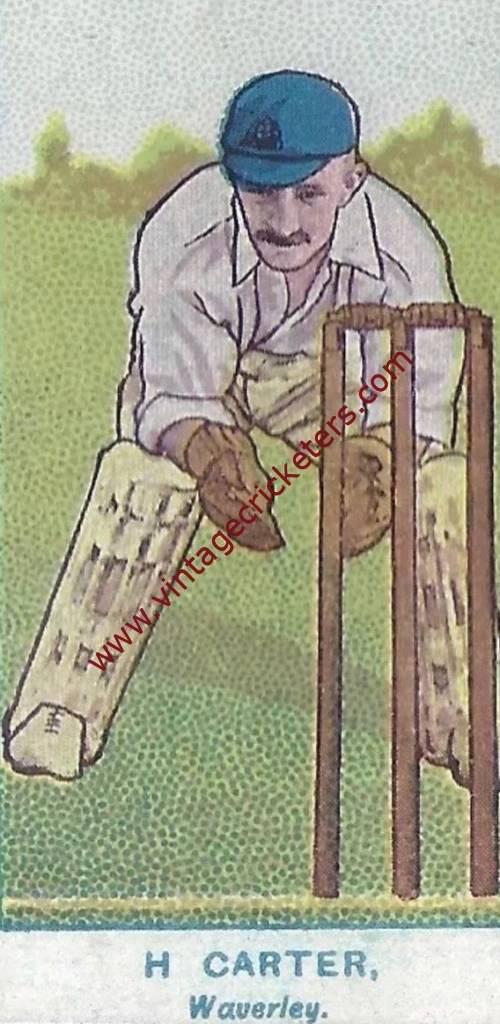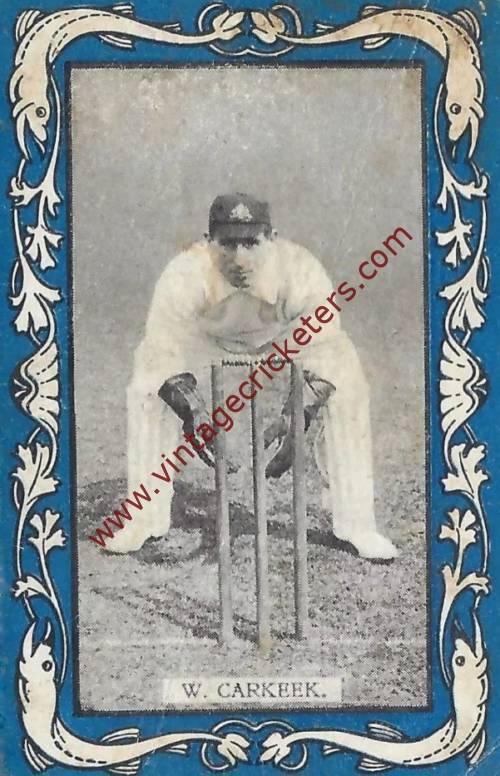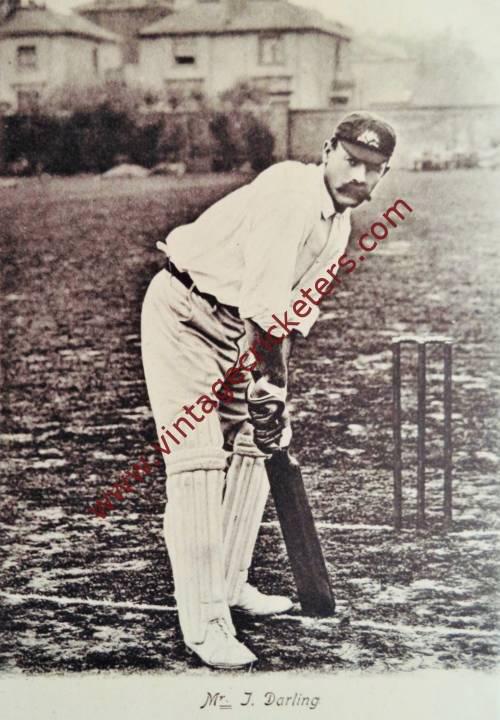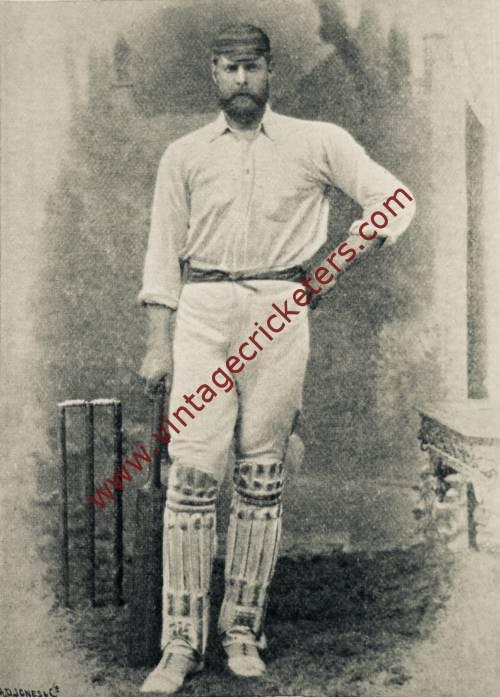Please choose your photo size from the drop down menu below.
If you wish your photo to be framed please select Yes.
Note: 16″x 20″not available in a frame.
Images can also be added to accessories. To order please follow these links
£8.95 – £49.95
Please choose your photo size from the drop down menu below.
If you wish your photo to be framed please select Yes.
Note: 16″x 20″not available in a frame.
Images can also be added to accessories. To order please follow these links
The maximum number of views of this element is reached.
Please contact the webmaster to enable unlimited views.
Bathurst, New South Wales born Charlie “Terror” Turner was a right-arm medium-fast bowler who is regarded as one of the finest ever produced by Australia. Among his accomplishments were:
– taking 283 wickets in the English season of 1888 for 11.27 runs each. This tally was 69 wickets ahead of Ted Peate’s 1882 record, and has been bettered only by Tom Richardson in 1895 and Tich Freeman in 1928 and 1933.
– taking 314 wickets in all matches in 1888.
– taking 106 wickets in twelve matches in the Australian season of 1887-88 – a record for any bowler in Australia
– taking 17 wickets for 50 runs against An England Eleven at Hastings in 1888. Of these 17, 14 were bowled, two lbw and one stumped.
– being the first Australian bowler to reach 100 wickets in Test matches.
– his 12-87 against England in his record season of 1887-1888 is still the best bowling analysis for a Test at the S.C.G.
the only bowler to take 50 wickets in their first six Test matches.
Turner’s early adventures in first class cricket were unsuccessful, having made his State debut for New South Wales in 1882-82, but in 1886-87, when he moved from Bathurst to Sydney to become a banker, his skill developed to a remarkable degree with 70 first class wickets at 7.68 runs each from just seven matches. In two games against Victoria he took 18 wickets for 184 runs, but it was his excellence against Alfred Shaw’s M.C.C. touring side that brought Turner acclaim in the English cricket community. Having made his Australian Test debut in the First Test at Sydney in January 1887, after England were put in on a very sticky pitch, Turner took 6-15, and in the Second Test, also at Sydney, his combined figures were 9-93.
The following year, Turner, with the Australian pitches already notorious for being difficult after rain, he had a strong season in the wet weather of a La Niña summer, his best performances outside the Test including:
– 10 for 45 v Arthur Shrewsbury’s XI;
– 16 for 79 in a second match v Arthur Shrewsbury’s XI;
– 11 for 119 v G.F. Vernon’s XI at the MCG;
– 5 for 17 in first innings for New South Wales v Victoria at the MCG.
In the English summer of 1888, along with John Ferris, Turner was prolific. However, he took 10-53 in Australia’s only win in the three Test series at Lord’s and took 9-15 versus An England Eleven at Stoke-on-Trent.
After three extremely prolific seasons, Turner could not maintain his productivity. With El Niño holding sway, the wickets in Australia in 1888=89 were unresponsive and Turner took only 29 wickets in six games, and even fewer the following season. However, still regarded as the best bowler for English conditions, Turner did not disappoint the selectors in 1890, taking 179 first class wickets (215 in all games) but being unable to break England’s dominance of Test cricket at the time.
In the following few Australian seasons, Turner continued to do well even if too little cricket was played for him to equal his records of the late 1880’s. In the relatively dry English summer of 1893, Turner still was Australia’s leading bowler with 148 wickets at 13.63, but the absence of Ferris and business commitments were slowly taking their toll on him. During this tour his speed was measured electronically at Woolwich Arsenal and timed at 81 feet per second, or 55 miles an hour.
When England next toured in 1894-95, Turner equalled Fred Spofforth’s record of 94 Test wickets in the Second Test at Melbourne on 31st December 1894, two days after the England bowler Johnny Briggs. The three men briefly held the record together, but Turner missed the Third Test at Adelaide and Briggs overtook him. Briggs became the first man to claim 100 Test wickets in the Fourth Test at Sydney on 1st February 1895, Turner being the second on 4th February in his last Test match.
Turner had the unique (in Test cricket) distinction of having Bobby Peel stumped for a pair on a sticky wicket in Sydney. His record in this Test series was actually his best since 1888, but two years later his banking business required him to move to Queensland, where he was not able then to continue playing cricket apart from one match for his benefit as late as the 1909-10 season – when he was 47 – that was not successful.
Many batsmen who played against him considered Turner without peer. He bowled right-hand medium pace with a relatively long and rhythmic run-up and a beautiful delivery that never aimed to exploit even his rather limited height of five feet nine inches. He could vary his pace a great deal, and combined this with an accurate length and a sharply-turning off-break that made him very difficult on rain-affected wickets. This unplayability on treacherous pitches earned him the nickname “Terror” Turner.
However, Turner continued to do service to the game in Australia as an administrator right through the early 20th century. He commented, notably, on how greatly the game in Australia changed after the era in which he played due to a drier climate and improved pitch preparation (and also covering of pitches in Shield matches from the 1930’s), which made Australian pitches almost impossible for bowlers of his type and led to reliance on leg spin.
On 15th January 2007, Turner was named in the New South Wales Cricket Team All Time Twelve, as part of the celebrations of 150 years of the New South Wales Cricket Team.
Vintage Cricketers was founded in July 2019. There may be more photographs of this cricketer in the Vintage Cricketers library, which are due to be loaded in due course. In the meantime, please send a message to us using the contact form at the bottom left of this page and we can arrange to prepare and publish all images of this cricketer if you have a particular interest in him.
| Weight | N/A |
|---|



